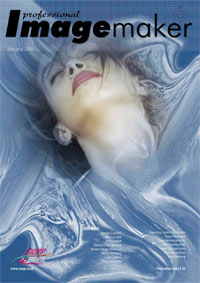articles/Photoshop/capturefidelity-page2
Capture to Output Fidelity - part 2 of 1 2 3
by Dave Montizambert Published 01/01/2006
In RGB we express brightness values as levels (0 - 255 levels for 8 bit per channel colour). The higher the number, the greater the brightness - 255 equals pure white and 0 equals pure black. The important question you need to ask is, how does the output device that I am printing from or displaying my image from fit within this 0 to 255 range? In other words what are the brightest and darkest values that that device can reproduce and still hold detail?
Assuming that you are setting the range of contrast of your image in RGB rather than in a CMYK printing space, the following should give you a guide line to safe output. Generally speaking most output devices will hold a slight bit of detail in light areas at 245 levels and in dark areas at 15 levels - at these RGB values, these tones should transfer safely to CMYK. However if you had a dark tone such as Firefighter Harp's dark skin in shadow on his left shoulder under the belt-strap, you would probably want it to be in the 20+ level ranges so that more than slight detail is seen. In fact this area reads Red: 25 Green: 22 Blue: 21 in one spot, and Red: 44 Green: 40 Blue: 37 nearby. Now, most UK wedding photographers photograph men with all their cloths on, as we do in Canada. In this case a more common dark area to watch is the groom's dark tuxedo. An area of a black tuxedo that is in full light I would probably want in the 30 to 50 levels range. To avoid solid black occurring in areas of a dark tux that are in shadow, I generally try to achieve a brightness of 15 to 20 levels. If your image is to be reproduced in newsprint you may well find that 15 levels is too low. Since newsprint is printed on a very rough porous paper, the ink dots tend to spread, called dot or press gain. Light-toned areas are made up of smaller printing dots, and darker are made up of larger printing dots. Larger means more ink. More ink means more ink to bleed outwards into other ink dots. The more the ink spreads, the more fine shadow detail gets lost. So for newsprint I like to set the significant shadow point higher than 15, more like 20 to 25.
On firefighter Harp's right chest muscle, the specular highlight reads Red: 247 Green: 246 Blue: 245 in one spot, and Red: 213 Green: 208 Blue: 206 near by. So parts of this specular highlight will probably print with no detail, but I had little concern because the burned out areas are only two to four pixels in size and are surrounded by a scattering of darker pixels. In general it is natural to have bright specular highlights burn out, however large areas of no detail do not look very good. The same is true (in most cases) with large areas of no detail in the dark portions of an image. One other point you need to be aware of is, if you let an area burn out, this area will have no printing dot when it prints. This means that you will be viewing the bare printing paper in this area. If you are using off-white paper this can look a little odd, so pull the values of these burned out areas down so that they will print with dots. This won't create detail in these areas if none existed, but it will stop the brightest highlights from looking off. To bring these values down try dragging the highlight Output slider to the left in Levels in Photoshop or by dragging the highlight endpoint of a curve in Curves straight down the right side of the Curves grid. Either way move these points until the burned out areas of the image read in the 240 to 245 level safe zone.
Newsprint: shadow with detail - 20 levels however don't drop below 30 levels in areas where detail is really critical. For highlight or white with detail you can go with 245 levels however I usually play it safe and go with 240.
Coated stock on sheet-fed offset print press: shadow with detail very slight detail is 15. Critical dark detail set to 20 - 25. For highlight with detail don't go above 245. If the quality of the printing is at question then play it safe and go with 240.
Ink-jet: shadow with very slight detail is 15. Critical dark detail set to 20 - 25. For highlight with detail don't go above 249 levels, however if you can't run some test prints first to see how far you can go then I would suggest sticking to 245.
Chemical-based lab prints: shadow with very slight detail is 15. Critical dark detail set to 20 - 25. For highlight with detail don't go above 250 levels, however if you can't run some test prints first to see how far you can go then I would suggest sticking to 245.
Please Note:
There is more than one page for this Article.
You are currently on page 2
- Capture to Output Fidelity page 1
- Capture to Output Fidelity page 2
- Capture to Output Fidelity page 3
1st Published 01/01/2006
last update 09/12/2022 14:52:15
More Photoshop Articles
There are 37 days to get ready for The Society of Photographers Convention and Trade Show at The Novotel London West, Hammersmith ...
which starts on Wednesday 14th January 2026





